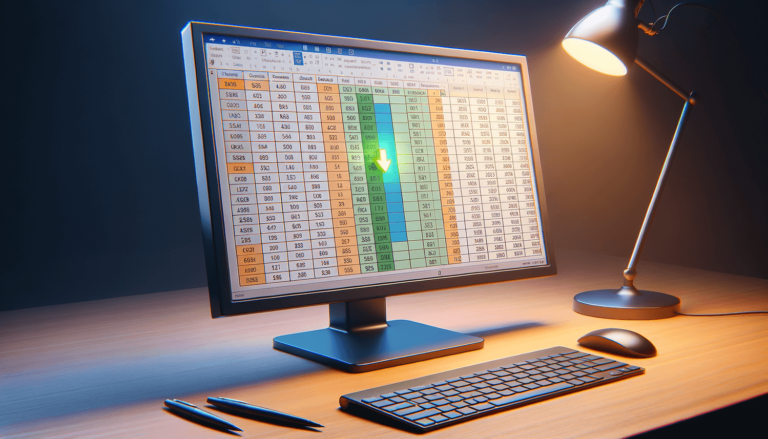

Welcome to our blog post on how to make an active cell in Microsoft Excel. An active cell is a cell that is currently selected or highlighted in Excel, and it serves as a reference point for various tasks such as data entry, formatting, and formula creation. Knowing how to make an active cell is essential for anyone who uses Excel regularly, as it can significantly improve productivity and efficiency. In this post, we will guide you through the different methods of making an active cell in Excel, including keyboard shortcuts and mouse navigation. Follow along and learn how to master this fundamental Excel skill.
One way to make an active cell in Excel is by using mouse navigation. To activate a cell with the mouse:
Another way to make an active cell in Excel is by using keyboard shortcuts. Here are the most commonly used shortcut keys:
The Name box is an under-utilized feature in Excel that allows you to select cells by typing their cell reference or name directly in the box. Here are the steps to use it:
If you need to activate multiple cells at once, you can select a range of cells in Excel using the following steps:
Once you’ve selected an active cell in Excel, you can use the arrow keys to move across other active cells. The following shortcuts will allow you to move in different directions:
If you need to select entire rows or columns in Excel, you can use keyboard shortcuts. These shortcuts are handy when working with a large dataset because you can select multiple rows or columns at once. Here are the different keyboard shortcuts for selecting rows or columns:
The Go To command is a powerful feature in Excel that allows you to quickly navigate to any cell in your workbook. Here’s how to use it:
Now you know several different methods to make an active cell in Excel, including mouse navigation, keyboard shortcuts, and name box selection. Whether you’re a beginner or an advanced Excel user, these simple techniques can significantly improve your productivity, making it easier to complete tasks more efficiently and accurately.
Below are some frequently asked questions about how to make an active cell in Excel:
Yes, using keyboard shortcuts is an effective way to make a cell active without using your mouse. Pressing the arrow keys is the most common method for moving around active cells without a mouse.
A selected cell is highlighted with a border, and it is the cell or group of cells that are currently being manipulated, while the active cell is the current cell in focus, where any data entered or commands executed will occur. They are the same cell if only one cell is selected.
You can select multiple cells in Excel by clicking and dragging your mouse over the cells you want to select, or by holding down the “Shift” key and clicking on each cell you want to include as a selection. Pressing “Ctrl+A” will select all the cells in your worksheet.
The Name Box is a small box located to the left of the formula bar in Excel. You can use it to enter the cell reference or name of the cell that you want to make active. Type the cell reference into the Name Box and press “Enter,” and the selected cell will be turned into an active cell.
You can deselect an active cell by clicking on a different cell, pressing the “Esc” key, or by clicking on any other cell outside your selected range. Alternatively, you can press the “Ctrl+G” key and click on the “Special” button to open the “Go To Special” dialog box. Then, select “Current region,” and click “OK.” This will deselect the active cell and select the entire data range instead.
Explore the world of Microsoft PowerPoint with LearnPowerpoint.io, where we provide tailored tutorials and valuable tips to transform your presentation skills and clarify PowerPoint for enthusiasts and professionals alike.

Your ultimate guide to mastering Microsoft Word! Dive into our extensive collection of tutorials and tips designed to make Word simple and effective for users of all skill levels.

Boost your brand's online presence with Resultris Content Marketing Subscriptions. Enjoy high-quality, on-demand content marketing services to grow your business.
